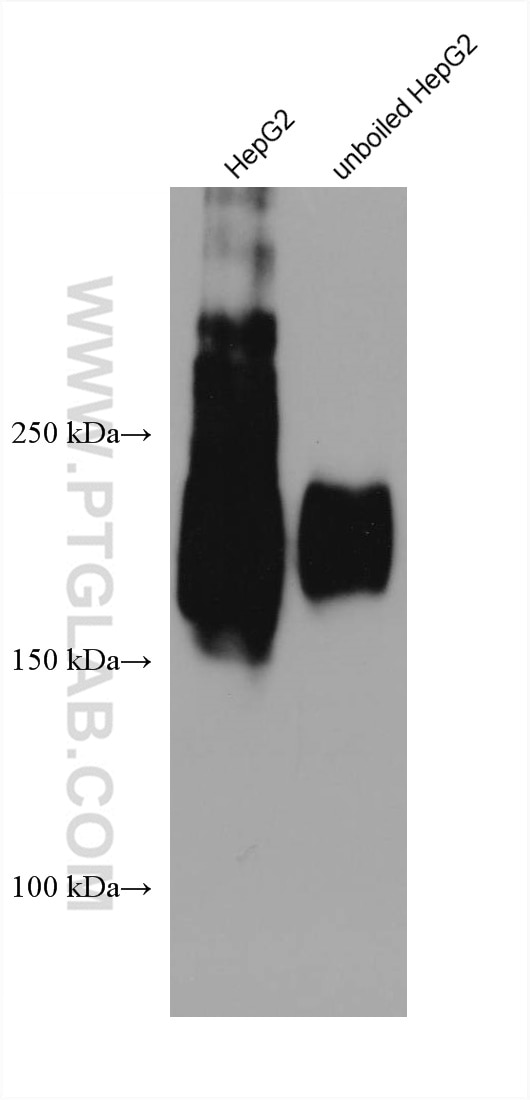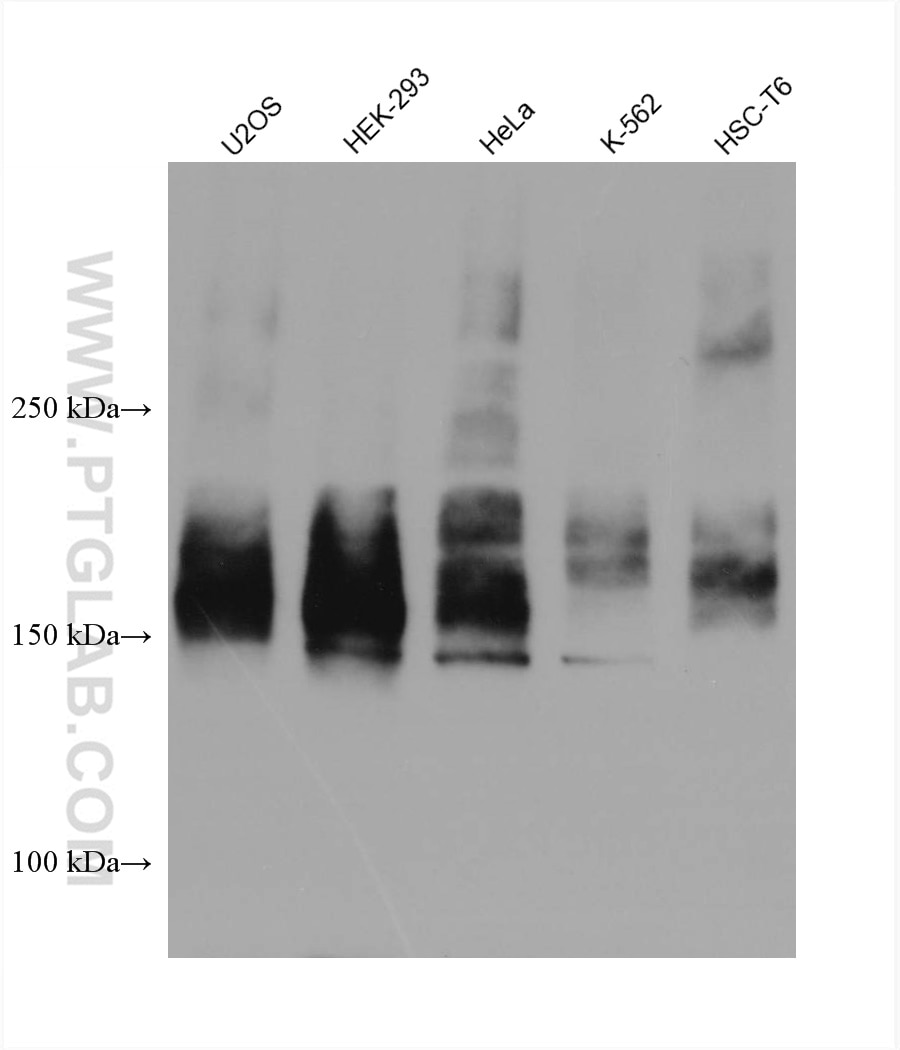Anticorps Monoclonal anti-ABCC5
ABCC5 Monoclonal Antibody for WB, Indirect ELISA
Hôte / Isotype
Mouse / IgG1
Réactivité testée
Humain, rat
Applications
WB, Indirect ELISA
Conjugaison
Non conjugué
CloneNo.
2H10F11
N° de cat : 67955-1-PBS
Synonymes
Galerie de données de validation
Informations sur le produit
67955-1-PBS cible ABCC5 dans les applications de WB, Indirect ELISA et montre une réactivité avec des échantillons Humain, rat
| Réactivité | Humain, rat |
| Hôte / Isotype | Mouse / IgG1 |
| Clonalité | Monoclonal |
| Type | Anticorps |
| Immunogène | ABCC5 Protéine recombinante Ag31674 |
| Nom complet | ATP-binding cassette, sub-family C (CFTR/MRP), member 5 |
| Masse moléculaire calculée | 161 kDa |
| Poids moléculaire observé | 180-200kDa |
| Numéro d’acquisition GenBank | NM_005688 |
| Symbole du gène | ABCC5 |
| Identification du gène (NCBI) | 10057 |
| Conjugaison | Non conjugué |
| Forme | Liquide |
| Méthode de purification | Purification par protéine G |
| Tampon de stockage | PBS only |
| Conditions de stockage | Store at -80°C. 20ul contiennent 0,1% de BSA. |
Informations générales
ABCC5, also named as MOAT-C, pABC11, SMRP, and MRP5, belongs to the ABC transporter superfamily, ABCC family, and Conjugate transporter (TC 3.A.1.208) subfamily. ABCC5 acts as a multispecific organic anion pump that can transport nucleotide analogs. ABCC5 functions in the cellular export of its substrate, cyclic nucleotides. This export contributes to the degradation of phosphodiesterases and possibly an elimination pathway for cyclic nucleotides. Studies show that ABCC5 provides resistance to thiopurine anticancer drugs, 6-mercatopurine and thioguanine, and the anti-HIV drug 9-(2-phosphonylmethoxyethyl) adenine. ABCC5 may be involved in resistance to thiopurines in acute lymphoblastic leukemia and antiretroviral nucleoside analogs in HIV-infected patients. Since it is glycosylated, the apparent molecular weight of ABCC5 could be variable, ranging from 161 kDa to 200 kDa (PMID: 10893247; PMID: 15897250; PMID: 31338999).





